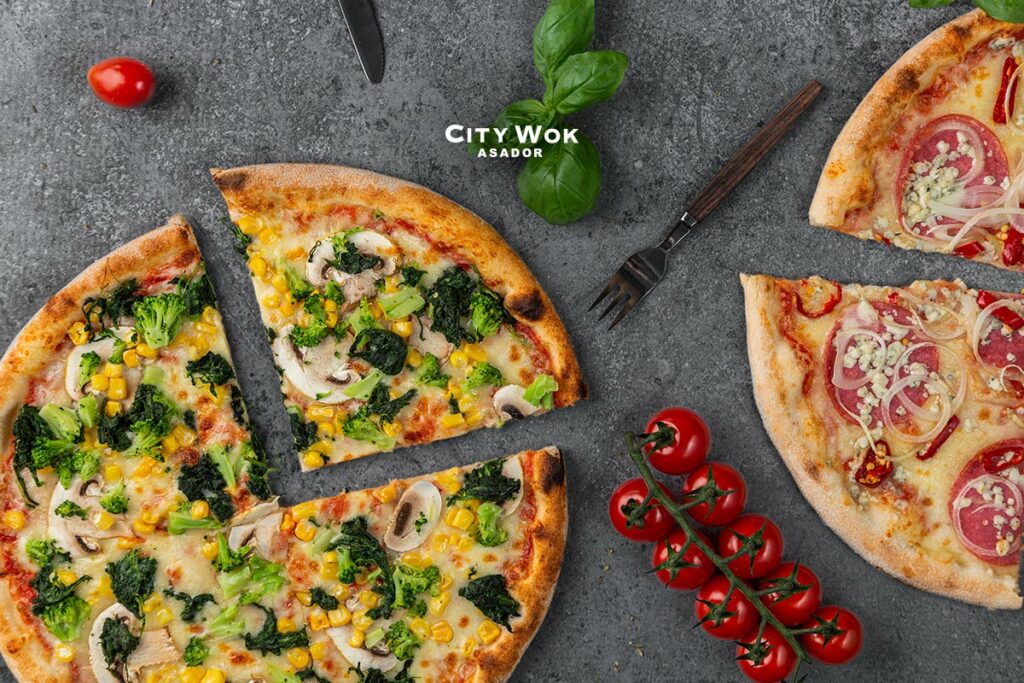Las pizzas más populares

Debido a la gran internacionalización y la popularidad que ha cogido a lo largo de los años, ha favorecido la aparición de platos muy parecidos. Encontramos por ejemplo en Turquía el Lahmacun o la aparición de nuevas recetas como las pizzas dulces con chocolate o por ejemplo las pizzas veganas con base coliflor. Es por ello que hoy os traemos un listado de las pizzas más populares.
Por todo el mundo es bien sabido que las pizzas italianas son las más famosas del mundo y es normal, teniendo en cuenta que se originaron en este país. Existen infinidad de tipos de pizzas y muchos tipos de ellas han dado la vuelta al mundo. Ejemplo de ello es la pizza margarita, la carbonara, la cuatro quesos y muchas más.
Además, muchos países han creado sus propias pizzas como por ejemplo en México su pizza mexicana o en Estados Unidos la pizza pepperoni.
¿Cuáles son las pizzas más populares?
Hemos seleccionado alguna de las pizzas más populares en el mundo, sean originarias de Italia o no.
- La pizza Napolitana
Esta pizza está elaborada originalmente con mozzarella de búfala y tomates de San Marzano o de Roma. Esta pizza está riquísima y es bien conocida por todo el mundo. ¿Quién no ha probado la pizza napolitana? Aunque quizás no con los tomates originarios de San Marzano.
- La pizza Margarita
Esta pizza es bien conocida por todos, pero su elaboración original y acertada no es la conocida por todos de pizza con cualquier tomate y queso. La elaboración original de la pizza Margarita tiene mozzarella de vaca (es más difícil de conseguir y cara), tomate Marzano, albahaca y aceite de oliva virgen extra.
- Pizza Carbonara
Si te gusta la pasta con salsa carbonara, esta pizza te encantará. Es la misma salsa elaborada con panceta/bacón, queso/nata, huevo y pimienta negra. ¡Es un acierto seguro!
- Pizza Barbacoa
Sus ingredientes son carne picada, cebolla, pimiento rojo y verde, mozzarella, parmesano, orégano y salsa barbacoa.
- Pizza cuatro quesos
La famosa pizza Quattro Formaggi que nunca falla. Contiene cuatro quesos y habitualmente son: mozzarella, el parmesano, gorgonzola y ricota, aunque no existen reglas fijas sobre qué quesos añadir.
- La pizza Prosciutto
Se llama así porque contiene prosciutto, que es un jamón de cerdo curado originariamente de Italia. En la pizza aparece en finas lonchas y acompañada de otros ingredientes como son el tomate, la mozzarella, el orégano, el huevo, champiñones, olivas negras, piña o atún.
- La pizza Caprichosa
Una de las pizzas más populares del mundo. Sus ingredientes son tomate, mozzarella, jamón, champiñones y alcachofas. Además, por encima de la pizza caprichosa se pone un poco de aceite de oliva, albahaca, olivas, huevo y prosciutto.
Disfruta de toda la variedad en Asador City Wok Elche
Estas son las pizzas más populares actualmente, pero están cogiendo mucha fuerza las pizzas dulces como la pizza de chocolate que suelen llevar avellana, alguna fruta como la fresa o el plátano, mantequilla y azúcar glass.
Otra variante que también tiene mucha fama es la Calzone, que es un tipo de pizza cerrada sobre sí misma, de esta forma puedes comértela caminando o de pie. Los ingredientes más comunes son jamón, huevo, ricota, mozzarella y salami, pero puedes poner los ingredientes que más te gusten.
En los últimos años también se ha hecho muy famosa la pizza con base de coliflor, perfecta para las personas que llevan una alimentación vegana o cuando no quieres comer tanta calorías pero sí disfrutar de una pizza. Nutritiva, crujiente, baja en calorías y buena. ¿Qué más puedes pedir?
Espero que este post sobre las pizzas más populares te haya gustado, esta es nuestra lista pero puedes decirnos tu favorita a través de nuestras redes sociales.